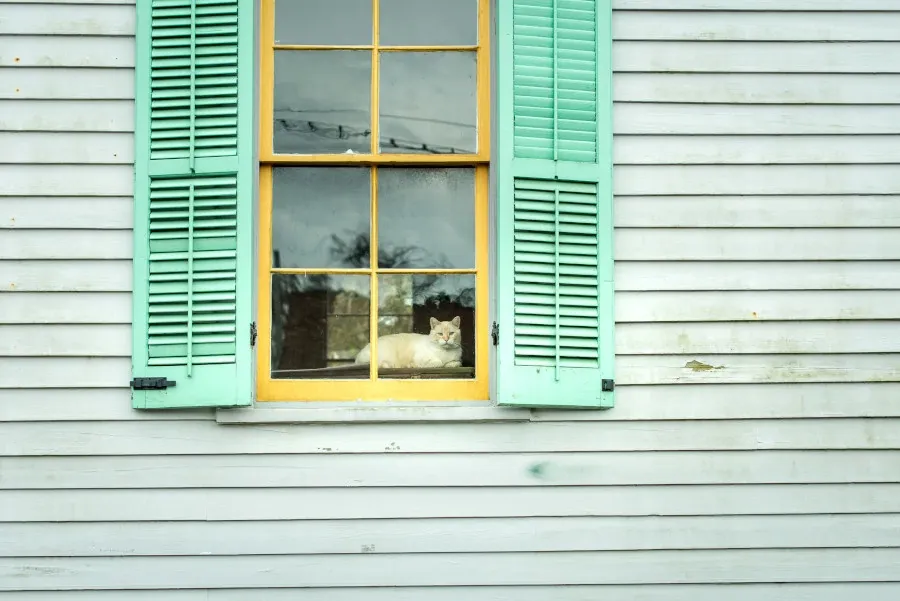Meet the Wild Ancestors of the House Cat
House cats are a subspecies of Felis silvestris – comprising around 5 subspecies of wildcat. Their closest progenitors are likely the African/Near Eastern wildcat (Felis silvestris lybica), the southern African wildcat (Felis silvestris cafra) and the European wildcat (Felis silvestris silvestris).

The previous post Are House Cats Still Carnivores? considered whether the domestic cat's classification as a carnivore is still accurate after millennia of domestication.
...the facts are quite surprising
Not only are house cats still considered to be carnivores, they are seen as obligate of hyper carnivores. This means that they – like every other cat species on earth – have evolved to be strict meat eaters.
In addition, the house cat shares a surprisingly close genetic ancestry to a group of small wildcat.
...house cats are believed to be descendants of Felis silvestris
Felis silvestris is a collection of around three or more interfertile subspecies of small wildcat 1. The term inter fertility is significant and means that these subspecies of cat are all genetically so similar that they readily interbreed.

Look familiar? This beautiful cat is the African/Near Eastern wildcat, Felis silvestris lybica. They are a close progenitor of the domestic cat that still roam the African plains.
This wildcat's resemblance to the common house cat is quite striking and it could easily be mistaken for a domesticated tabby!

The southern African wildcat shown above, Felis silvestris cafra, is another subspecies of wildcat that shares an uncanny resemblance to a tabby house cat 1.
Unfortunately, many years of interbreeding has led to hybridisation of several small wildcat. This complicates the genetic picture a little.
...archeological and genetic findings
Studies have revealed that close co-existence between small wildcat and man began in the Fertile Crescent at least 9500 years ago 1. This crescent shaped region in the Middle East, which includes Cypress and Egypt, is where the domestication of the small wildcat likely began.
Some argue that the man and feline affiliation dates back even further – to the dawn of agriculture around 12,000 years ago 2.
A large scale look at ancient cat DNA indicated that small wildcat were taken further into ancient Eurasia and Africa by seafarers, early farmers – and even Vikings 2. Other cat species were likely also imported by these seafarers.
The Egyptians were known to collect and keep various recognisable species of cat 3. Be as it may, cats were always kept close to control rodent populations.
...some Felis silvestris silvestris sprinkled in
Felis silvestris silvestris, the European wildcat, is also believed to be a close progenitor of the house cat 1, 3. It is a small forest dwelling wildcat native to Scotland through continental Europe to western Asia 4.
It has a characteristic thick coat, brownish to grey in colour, with forehead and side markings. It's tail ends in a distinct black rounded tip.
As with the other two small wildcat species in the photographs, this cat also resembles a common tabby house cat quite closely.

...enters Felis silvestris catus – the house cat
The house cat is classified as Felis silvestris catus, a distinct subspecies of Felis silvestris that evolved separately from other small wildcat 1, 5.
Though, some geneticists feel that Felis domesticus is perhaps a more inclusive and appropriate label for the house cat 3.
In any case, when comparing the above images of true wildcat to a tabby house cat, they are rather difficult to distinguish from one another 1.
However, the visual similarities are not the only clues to the house cat's close ancestry.
...one minor genetic distinction set them apart
Geneticist, Dr Carlos Driscoll, and his research team could detect virtually no genetic difference between the house cat and their wildcat ancestors 1.
Australian biologists, Dr Luke Hunter, agrees that the genetic distinction is minor 5.
It is only this one very small genetic difference that gave rise to the subspecies Felis silvestris catus for the common house cat. It is quite remarkable that only the one small difference emerged after 12 millennia of separate development from their wildcat natives.

Behold, the mackerel tabby house cat in its natural habitat – every bit as beautiful as a wildcat.
...if left unchecked, house cats and wildcat will interbreed
As stated earlier, Felis silvestris subspecies, including the house cat, are interfertile. Usually, mother nature has a trick up her sleeve to prevent interspecies breeding.
The hybrid offspring are rendered infertile and don't have viable sex cells 6. Owed to mismatched chromosomes from the parent animals, offspring are unable to produce sperm or eggs and can therefore not reproduce.
...but house cat and wildcat offspring are fertile
Hybrid infertility is clearly illustrated by the liger, a cross between a lion and tiger, that is unable to reproduce 6.
However, house cat and wildcat interbreeding produce fertile offspring. This proves just how genetically similar these cats truly are. After reading this, I am sure that you will look at your cat quite differently.
...further evidence of the house cat’s status as a carnivore
Did you find this article interesting? The next article Where’s the Proof that House Cats are Strict Carnivores? delves into the genetic, physiological, anatomical and behavioural proof that house cats are still every bit a carnivore as a cat in the wild.


References
1 Driscoll, C.A., Menotti-Raymond, M., Roca, A.L., Hupe, K., Johnson, W.E., Geffen, E., Harley, E.H., Delibes, M., Pontier, D., Kitchener, A.C., Yamaguchi, N., O’Brien, S.J. & Macdonald, D.W., (2007). The Near Eastern origin of cat domestication , Science, 317, 519 – 523.
2 Callaway, E. (2016). How cats conquered the world (and a few Viking ships). In Nature. Retrieved September 27, 2016, from https://www.nature.com/articles/nature.2016.20643
3 MacDonald, M.L., Rogers, Q.R. & Morris, J.G. (1984). Nutrition of the domestic cat, a mammalian carnivore. Annual Review of Nutrition, 4, 521 – 562.
4 Encyclopaedia Britannica (n.d.). Wildcat. Retrieved April 18, 2023, from https://www.britannica.com/animal/wildcat-mammal-Felis-silvestris
5 Hunter, L. (2015). Wild cats of the world. London: Bloomsbury Publishing Plc.
6 Margolin, M. (2016). This is why ligers, mules and other hybrid animals can't reproduce. In Vice. Retrieved on January 20, 2023, from https://www.vice.com/en/article/ezp5da/this-is-why-ligers-mules-and-other-hybrid-animals-cant-reproduce
Disclaimer
The information provided on the Bestfedcats.com website is educational and informational. We are here to give guidance on how to feed a properly balanced raw diet. We also offer advice on how to improve the diet of the modern house cat. Please note that we are not veterinarians. We are not here to give veterinary advice. Best Fed Cats will not be held responsible for any adverse reactions to your cat based on the information on our website. The health of your cat depends entirely on you. We expect you to use your knowledge of your cats, their circumstances and their health – in conjunction with a trusted veterinarian – to determine if any advice provided on this site is appropriate for your cats.

